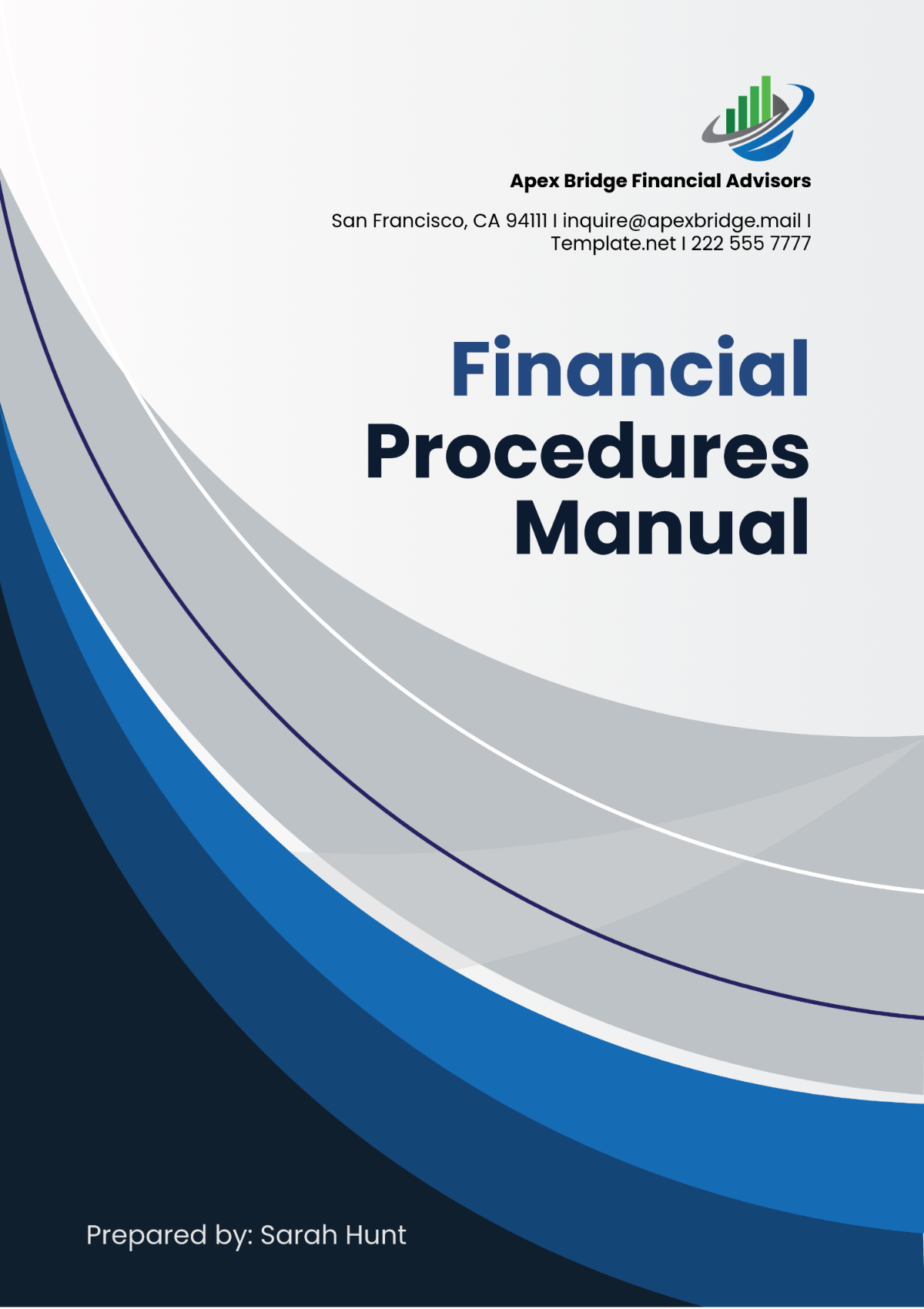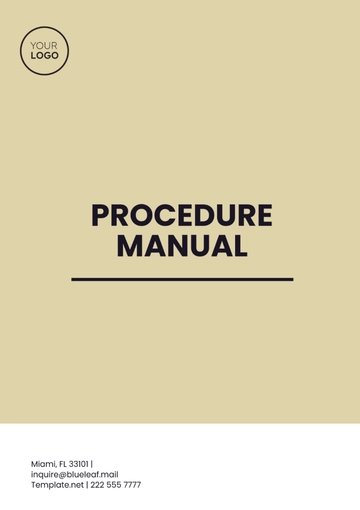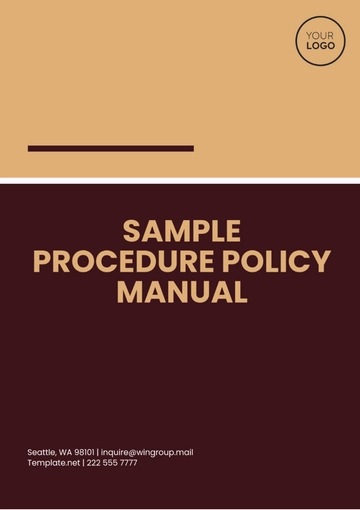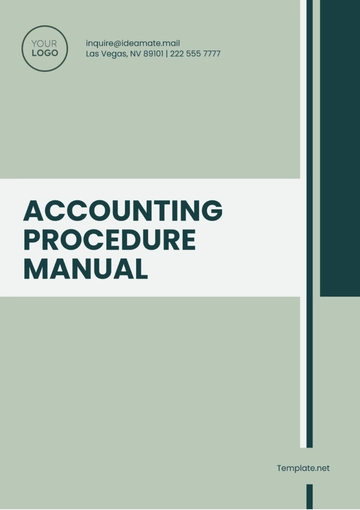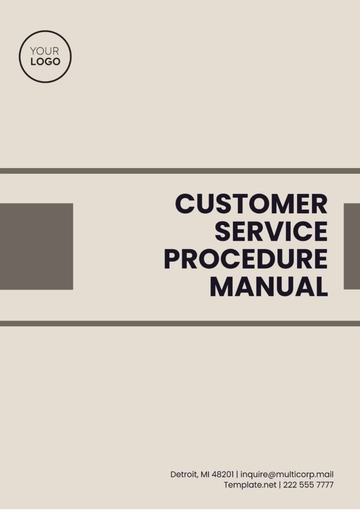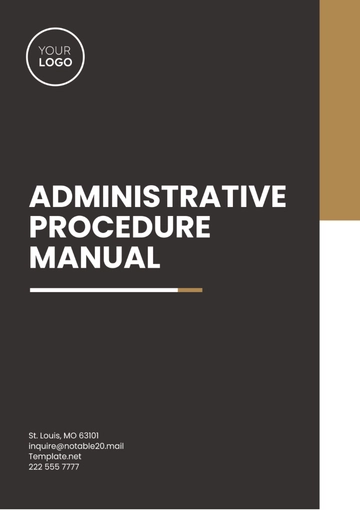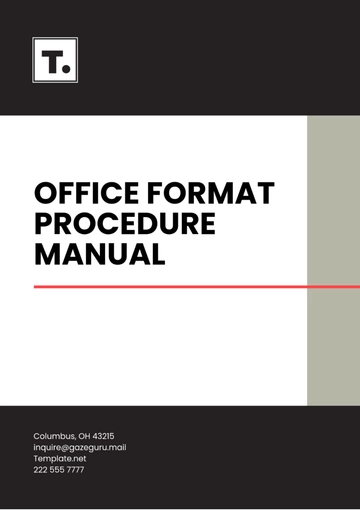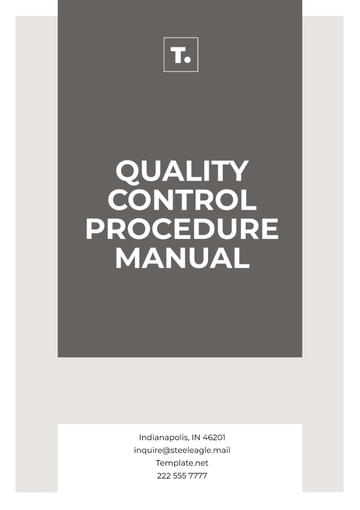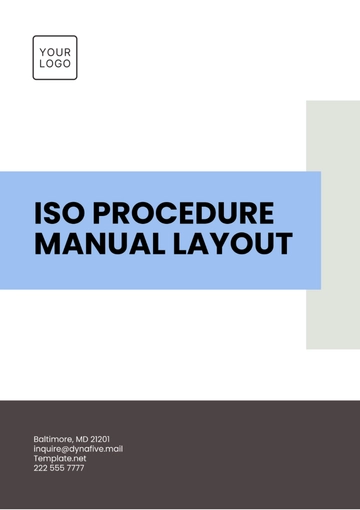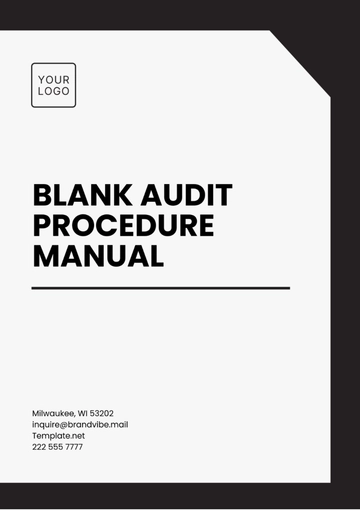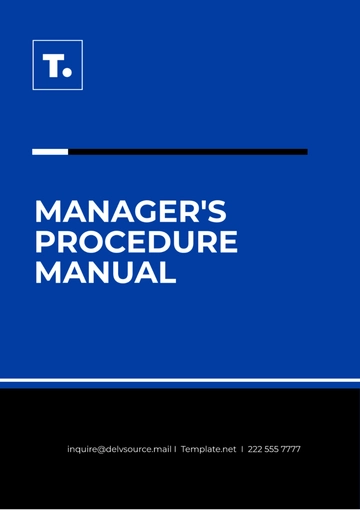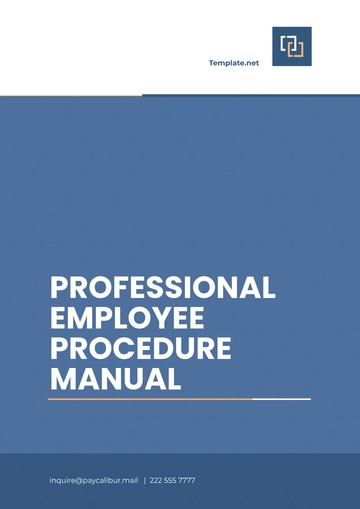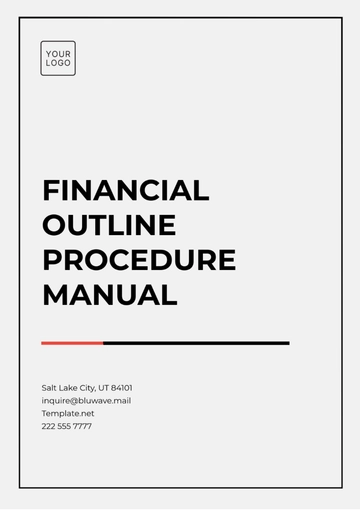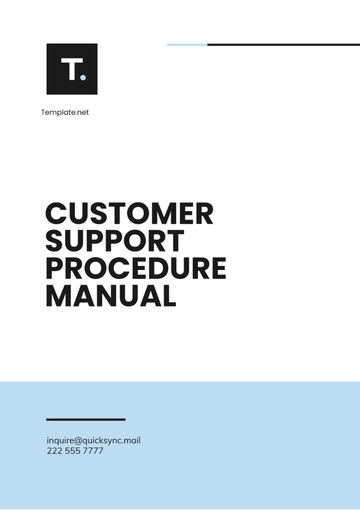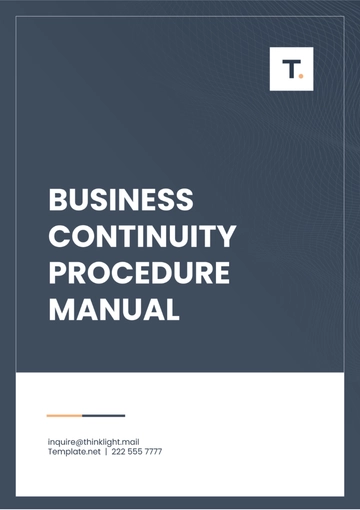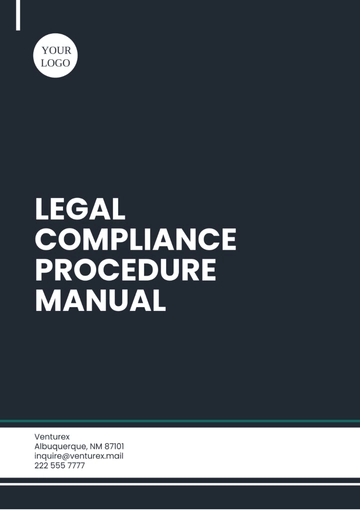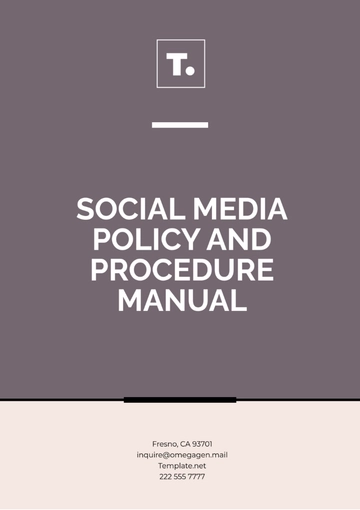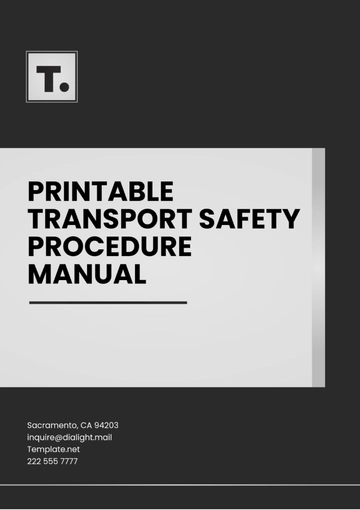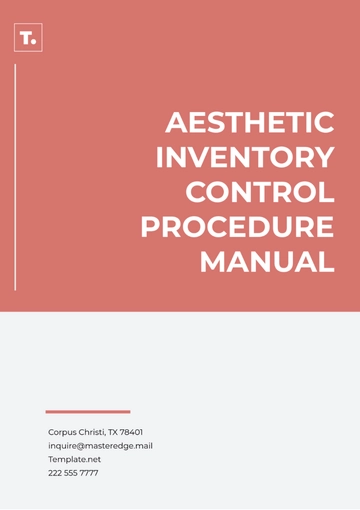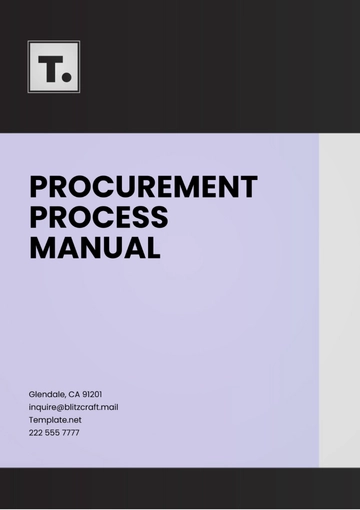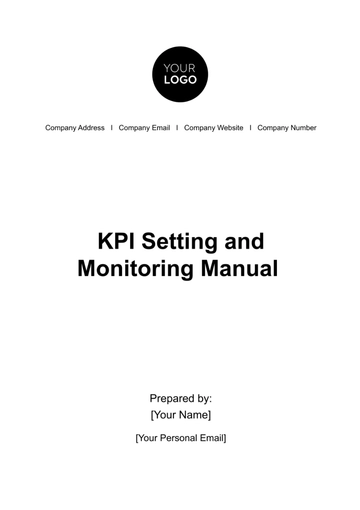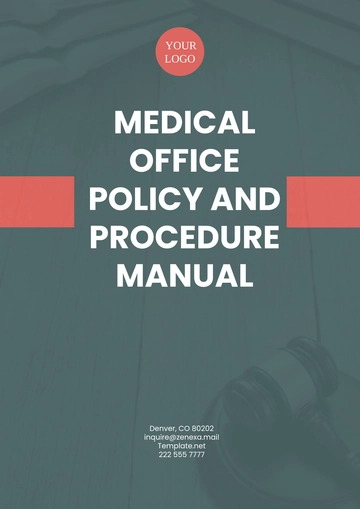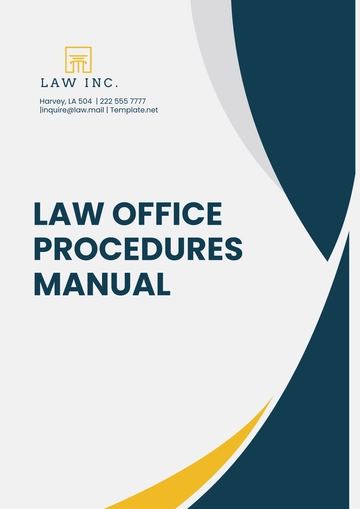Financial Procedures Manual
Introduction
This Financial Procedures Manual is designed to standardize financial operations across all departments at [Your Company Name]. By implementing these procedures, we aim to ensure consistency, accuracy, and efficiency in handling financial transactions and reporting. This manual serves as a comprehensive guide for managing financial processes and should be referenced regularly to maintain alignment with organizational objectives and compliance requirements.
I. General Financial Policies
1. Purpose and Scope
The financial policies outlined in this section provide the foundation for all financial activities within [Your Company Name]. These policies apply to all employees involved in financial transactions, including accounting, budgeting, and reporting.
2. Financial Accountability
All employees must adhere to the highest standards of financial accountability. Each department head is responsible for overseeing financial practices within their respective areas and ensuring compliance with this manual.
3. Compliance and Reporting
Adherence to financial regulations and timely reporting are critical. Departments must ensure compliance with applicable laws and regulations, and reports should be submitted to the Finance Department according to established deadlines.
II. Budgeting Procedures
1. Budget Preparation
Budgets must be prepared annually and submitted for approval by the end of the fiscal year. The budget preparation process involves:
Gathering historical financial data.
Forecasting future financial needs.
Aligning departmental budgets with organizational goals.
2. Budget Approval and Implementation
Once prepared, budgets require approval from the Finance Committee. Upon approval, budgets are implemented and monitored for adherence. Departments are expected to manage expenditures within their allocated budgets.
3. Budget Monitoring and Adjustments
Monthly budget reviews are conducted to assess performance against budgeted figures. Any significant deviations should be reported, and adjustments made as necessary.
III. Financial Reporting
1. Financial Statements
Financial statements must be prepared quarterly and annually. These statements include:
Balance Sheet
Income Statement
Cash Flow Statement
2. Internal Reporting
Departments are required to submit internal financial reports on a monthly basis, detailing budget performance and expenditures.
3. External Reporting
External financial reports must be filed in accordance with regulatory requirements. These reports are typically prepared by the Finance Department and audited annually.
IV. Accounts Payable and Receivable
1. Accounts Payable
Invoices must be reviewed and approved before payment. The approval process includes:
Verification of invoice accuracy.
Approval by the department head.
Processing of payments in accordance with vendor terms.
2. Accounts Receivable
Receivables should be monitored and collected in a timely manner. This includes:
Issuing invoices promptly.
Following up on overdue accounts.
Recording payments accurately.
3. Reconciliation
Monthly reconciliations of accounts payable and receivable must be conducted to ensure the accuracy and completeness of financial records.
V. Asset Management
1. Asset Acquisition
All acquisitions of assets must be documented and approved. This includes:
Justification for the need for the asset.
Approval from the Finance Department.
Recording of asset details in the fixed asset register.
2. Asset Maintenance
Regular maintenance of assets is required to ensure they remain in good working condition. Departments must follow the prescribed maintenance schedule.
3. Asset Disposal
When assets are no longer needed, they should be disposed of following company policy. This includes:
Obtaining approval for disposal.
Documenting the disposal process.
Removing the asset from the fixed asset register.
VI. Internal Controls
1. Segregation of Duties
To prevent fraud and errors, responsibilities should be divided among different employees. This includes:
Separation of transaction authorization from transaction processing.
Independent review of financial transactions.
2. Access Controls
Access to financial systems and records should be restricted to authorized personnel only. Regular reviews of access rights are required to ensure appropriateness.
3. Audits
Periodic internal and external audits are conducted to evaluate the effectiveness of internal controls and compliance with financial policies.
VII. Document Retention
1. Record Keeping
Financial records must be retained in accordance with legal and regulatory requirements. This includes maintaining:
Transaction records
Financial statements
Supporting documentation
2. Disposal of Records
Records should be disposed of securely once they are no longer needed, following the retention schedule and legal guidelines.
For further information or clarification regarding any procedures outlined in this manual, please contact the Finance Department at [Your Company Email] or visit our website at [Your Company Website].
Manual Templates @ Template.net
